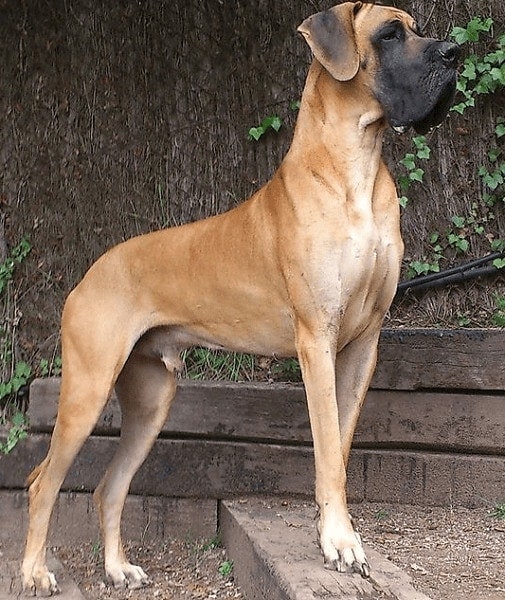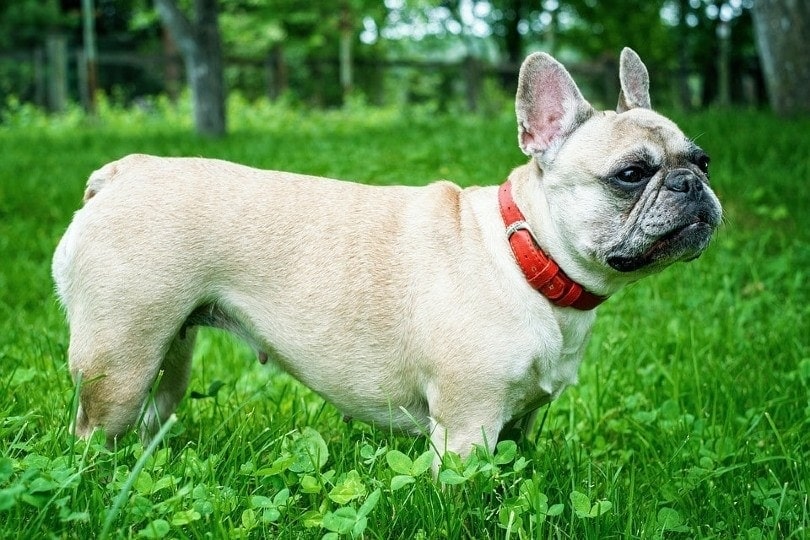Fawn Great Dane: Pictures, Facts, & History
By Kit Copson
Updated on

The Great Dane is quite a sight to behold. With their massive bodies, confident stance, long, expressive faces, and legs that seem to go on for miles, these dogs never fail to capture the attention of passersby.
Fawn—a sort of light brown/tan color—is one of the 10 AKC standard colors for this breed, along with black and white, blue, harlequin, and silver among others. This color can be paired with white, black, or black mask markings. Read on to find out about the breed’s history, how the Great Dane became popular, and what they’re like as family dogs.
The Earliest Records of Fawn Great Danes in History
It is thought that the Great Dane goes back over 400 years and, despite what the breed’s name suggests, these dogs actually originated in Germany, not Denmark. It is not known why they were originally called Great Danes when they did not originate there, but they were used as guardian dogs in Denmark as well as Germany, which may have something to do with it.
All that being said, the image of dogs that look somewhat like the Great Dane can be found in Ancient Egyptian carvings, so it’s likely that their ancestors go back much further than just a few hundred years.
Great Danes as we know them today descend from wild boar-hunting Mastiffs that guarded country estates in Germany, Denmark, and England. They were prized by the nobility for their sheer size and power—only certain breeds were capable of tackling wild boar, and the Great Dane was one of them.
In the 19th century, the breed was further developed and started to resemble Great Danes as we know them today.

How Fawn Great Danes Gained Popularity
In the 1700s, Great Danes were very popular with the upper classes who used them as estate guardians and in sports due to their hunting prowess. Many Great Danes were given royal treatment—some were even permitted to live inside the estates they guarded and sleep in their owners’ bedrooms. These esteemed dogs wore expensive collars and were chosen based on their size and hunting capability.
From the 19th century onwards, Great Danes remained popular and later became much-loved family dogs due to their gentleness, patience, and loyalty. They were first imported into the US shortly after 1863.
Formal Recognition of Fawn Great Danes
The American Kennel Club first recognized the Great Dane in 1887 and the United Kennel Club recognized the breed in 1923. The Fédération Cynologique Internationale (FCI) in Europe accepted Great Danes on a definitive basis on 18 November 1961.
The Great Dane is a member of the working group and the AKC’s breed standard describes this breed as having a “regal appearance”, “great size”, “well-formed, smoothly muscled body”, and “well balanced”.
The AKC lists 10 standard Great Dane colors including fawn, but the FCI only lists three color varieties, which are fawn and brindle, harlequin and black, and blue.

Top 5 Unique Facts About Fawn Great Danes
1. The Great Dane Is Called “the Apollo of Dogs”
The Great Dane was given this monicker on account of their air of nobility, regality, and beauty.
2. Germany Once Banned the Use of the Name “Great Dane”
In the late 19th century, Germany banned people from calling these dogs “Great Danes” and changed the name to “Deutsche Dogge”, which translates to “German Mastiff.”
3. Great Danes Are the World’s Tallest Dogs
This one probably comes as no surprise to most. Male Great Danes can grow up to 32 inches tall, whereas females are typically slightly smaller at 28 to 30 inches tall.
4. The World’s Tallest Dog Comes from Texas
A Great Dane named Zeus was named the world’s tallest dog by the Guinness World Records in early 2022. He hails from Texas and is 3 feet and 5.18 inches tall.
5. Great Danes Are Gentle Giants
Though the Great Dane’s large size makes them appear intimidating, they’re known for being very patient, affectionate, and gentle dogs.

Does a Fawn Great Dane Make a Good Pet?
As long as they’ve been socialized and trained properly, Great Danes are very gentle, sweet-natured dogs that get along well with children and other pets. They have moderate energy levels but still need around two hours of exercise per day as adults, so they’re best suited to families ready to take on that commitment.
You also need to remember to be careful not to overexert Great Dane puppies. If they’re exercised too much at an early age, it can damage their growing joints and bones.
Great Danes might also be better suited to those with some experience with dogs rather than first-time owners. Though they’re very sweet dogs, if not socialized and trained effectively, they can become difficult to manage—especially given that they’re so huge and powerful. It’s definitely a good idea to enroll your Great Dane in obedience classes to give you a helping hand in this area.
Another thing to bear in mind is that Great Danes unfortunately have a pretty short estimated lifespan compared with some other breeds—around 7–10 years. One of the major health conditions they’re prone to include bloat, which can be very dangerous for dogs and, according to the AKC, is the condition that most commonly kills Great Danes.
Conclusion
To recap, we know for sure that the Great Dane dates back at least a few hundred years, but the images of dogs resembling them in ancient Egyptian art suggests that their ancestors have a much longer history. They were bred to hunt wild boar and protect the homes of the nobility, but, in spite of their power and hunting prowess, they’re famous for being very gentle, even-tempered family dogs.
Related Reads:
- Doberman vs. Great Dane: How Do They Compare? (With Pictures)
- American vs European Great Dane – How Do They Compare? (With Pictures)
- Irish Wolfhound vs Great Dane: How Do They Compare?
Featured Image Credit: Dmussman, Shutterstock














